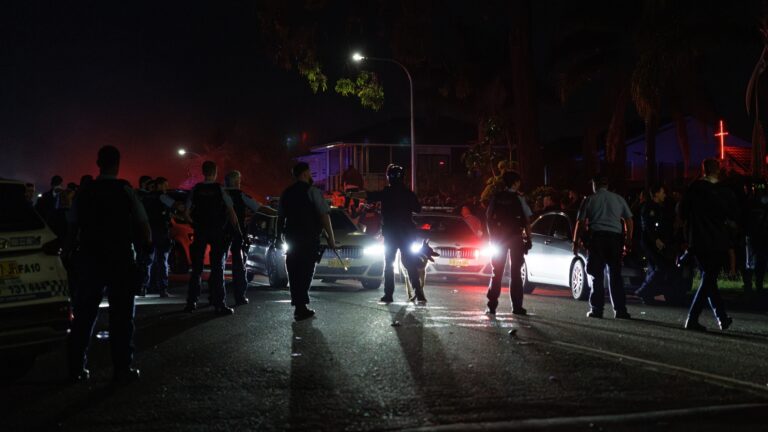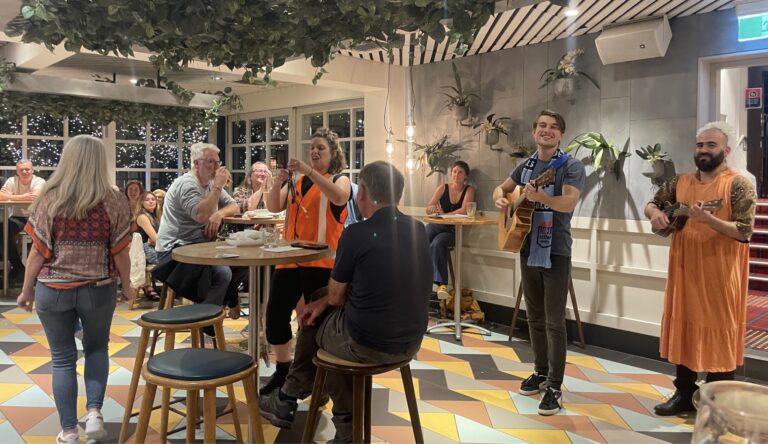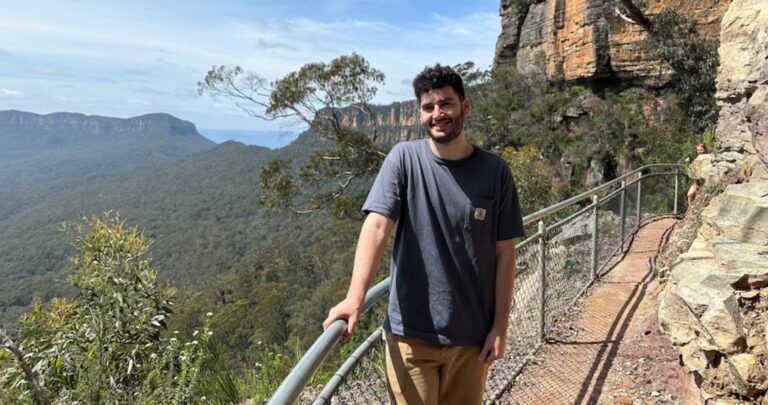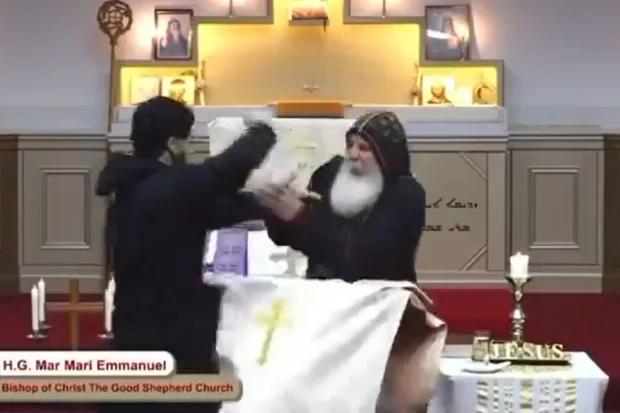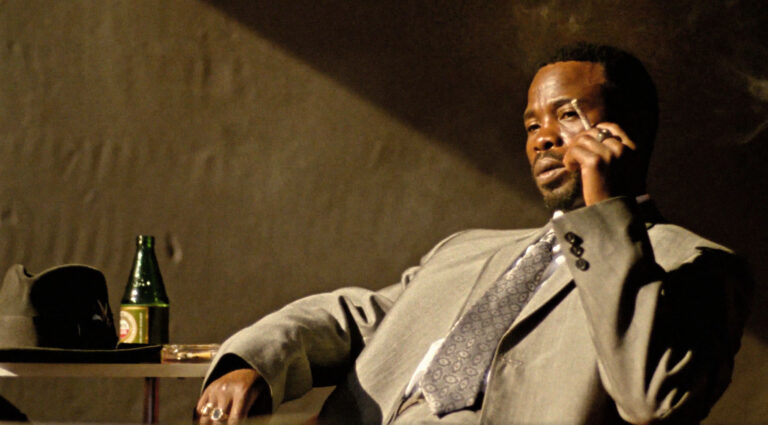
REMEMBERING MARTIN SHARP (1942-2013)
After a long battle with emphysema, legendary artist, Martin Sharp died last week (Dec 1). Martin was a family friend, and someone who had a great influence on me and my work. As a child in the 80’s Martin was the first adult I knew who identified as an artist, and he was always encouraging of me and my work.
Martin had an amazing drive and was always painting or drawing a picture. I loved that social visits would rarely deter him from these pursuits. He was a devoted artist who showed me, rather than told me, that less talk and more action was the way to create art.
Martin’s home is a place called Wirian, a grand old Bellevue Hill mansion from a time when things were built to last. The main room in the house Martin used for his studio had a massive dining table at its centre, littered with papers, paint tubes, brushes, ash trays, coffee cups and a model of a ship. The bookshelves overflow with figurines, pictures of Tiny Tim, Charles and Di, Ginger Meggs and Mickey Mouse.
When I was older I remember Martin once told me he was briefly a cartoonist for a Rupert Murdoch paper but got fired by Murdoch because he drew a cartoon of Boofhead hitting Boofhead in the face. This apparently really offended Murdoch. It turned out when Murdoch was in high school the other kids would pick on Rupert and his nick name was Boofhead! Murdoch thought it was a personal attack on him. But it was just a cartoon!
To me Wirian was a creative extension of the Yellow House, however Rene Magritte’s style which influenced Martin’s Yellow House work had grown into a love of Tiny Tim’s old time music. This was something that defied fashion (and wasn’t to everyone’s tastes); however despite at one time having been the centre of London’s trendy counter-culture, being unfashionable was never something that concerned Martin, he was simply a man, an artist, following his own passions.
In keeping with this Martin established the Dream Museum, a toy museum at Wirian.
Martin started the Dream Museum to preserve what was left of Sydney’s original Luna Park and then it evolved into becoming a toy museum for children.
In 1979 there was a tragic fire at Luna Park, after which the owners sold off most of the rides. Martin, Peter Kingston and others bought as much as they could afford at an action with the hope that one day Luna Park would be restored to its original glory. These pieces included carnival murals by Arthur Barton and Fred Schweickle, a River Caves mermaid, a laughing clown, a penny arcade game. Thanks to their foresight most of these pieces have made it back home and can be seen today at Coney Island.
I was lucky enough to enjoy the amazing Dream Museum. It was a room at the far end of Wirian where there where large display cabinets crammed with toys. One contained hundreds of Mickey Mouse figurines. I also remember an old train set which I loved. The Dream Museum was the first place I ever saw an Asterix figurine!
Every time we visited Martin my big sister and I would play in the Dream Museum. We spent most of our time drawing pictures (to give to Martin) and playing with Smurfs and Star Wars figurines. Our favourite toy was the Inspector Gadget figurine which had moving parts and gadgets.
Martin and his artist friends created a place which made my childhood even better than it already was. It was every child’s dream environment and it was ‘Just for Fun’.
I think what Martin found in Tiny Tim’s music was a juxtaposition of songs melded together in the comical character of Tiny Tim. Tiny’s songs also represented to Martin the music of his parents, a time when they were all a happy loving family. Tiny Tim and Wirian both are echoes of the past singing in the present. I think it all makes sense if one follows their dreams which Martin did. His courage to follow his passions also helped create some of my favourite works of art.
R.I.P Martin Sharp 1942 – 2013
By Joel Tarling
MARTIN SHARP BIOGRPAHY
Martin Sharp was born in Sydney Australia in 1942. After completing high school at Cranbrook he attended the National Art School Art School. There, he and artist friend Garry Shead, published a broadsheet called Arty Wild Oat. At the same time Richard Neville and Richard Walsh wanted to combine their university publications of Honi Soit and Tharunka into one newsstand satirical paper. With the two Richards as editors, Martin Sharp became the third driving force, and art director, of the now infamous OZ magazine. Their cheeky piss-takes on politicians and authority figures led a number of legal battles on both sides of the globe.
In 1966, on the day Bob Dylan performed in Sydney, Richard Neville & Martin caught a flight to London. There, Richard, Jim Anderson and Felix Dennis launched OZ in London, this time not so much cheeky as full-on confronting to the establishment. Martin was again the art director and his visual ascetics drove the distinctive look of OZ.
At this time Martin also worked (in collaboration with Beatles photographer, Bob Whitaker) on a Beatles calendar, he did posters for Bob Dylan’s Mr Tambourine Man, Donovan, Jimi Hendrix, Jeff Beck, Ten Years After and many more. At The Speakeasy one night he wrote out a poem he had been working on on a serviette for a young guitarist who said he had music that he had been working on but no lyrics. Tales of Brave Ulysses became a classic for Cream and Eric Clapton. Martin also created the albums covers, Disraeli Gears and Wheels of Fire and a poster for the band. Many of these images may still be available in England via Big O Posters. Along with a whole coterie of creative’s living at the Pheasantry in Chelsea, Eric and Martin became flat-mates. On returning from a tour of America with Cream, Eric recommended Martin should attend Tiny Tim’s Albert Hall Concert in 1968. Noticing that Martin listened to rather a lot of Al Bowlly, Rudi Vallee, Al Jolson, Eric said: “You like that old music, Martin!” What Martin saw in Tiny Tim that night changed him forever.
Sharp was very much at the centre of London’s counter-culture. Aside from the musical collaborations he was Artistic Adviser in Mick Jagger’s film Performance and his pictures were featured in the film set, he had numerous solo shows, published books, and established The Yellow House (a live-in art gallery).
In 1973 Sharp returned to Australia and is best known for his work designing posters for The Nimrod Theatre and his extensive work in the restoration of Luna Park, including being commissioned to renovate the iconic entrance Laughing Face. He was later deeply affected by the Ghost Train fire that claimed seven lives and he firmly believed was a deliberate act of terrorism aimed at destroying the park so the site could be claimed for development.
Martin’s love of Tiny Tim manifested itself in a number of ways of the decades. He designed costumes, painted sets, and most memorably, spent a decade working on the film Street of Dreams, (which allegedly made the Guinness Book of Records as the longest film in production). They started in 1979 and shortly before his passing Martin continued to insist there was much more work to be done. Although a version of the film was screened at Tint Tim’s insistence at the Brighton Arts Festival in May 1988. This is known as ‘the Brighton Cut’ (which can be seen in its entirety on YouTube).
As side projects, Martin and Tiny made three excellent records at that time – Chameleon LP, Wonderful World of Romance LP and Keeping My Troubles to Myself EP. These are their best recordings. Chameleon and Wonderful World of Romance are currently available on CD, via Zero Communications Japan. (Also a third album Stardust which is a less crafted ‘for fans only’-type of LP. However, Martin’s artwork on Stardust is absolutely outstanding, worth the price of the CD alone.)
Tiny Tim came to Australia nine times. Martin was involved in seven of those tours. Each time Martin created at least one new poster and he booked a stylish venue where Tiny could perform. In 1982, this was Sydney Opera House, paid for by a royalty cheque for writing the lyrics to Tales of Brave Ulysses for Eric Clapton. Martin continued to work on Tiny Tim projects after Tiny’s death in 1996. He has compiled an unreleased CD called King for a Day and never stopped working on the film. In 2002, musician Mic Conway and others did the preliminary work for a stage show about Tiny, which never eventuated.
One of the last things Martin did for Tiny was to contribute artwork to Tiny’s biography, Tiptoe Through a Lifetime, by Lowell Tarling (my father).
Joel Tarling is a long time City Hub illustrator, cartoonist and contributor. Martin Sharp’s influence on Joel can be seen at joeltarling.com.
